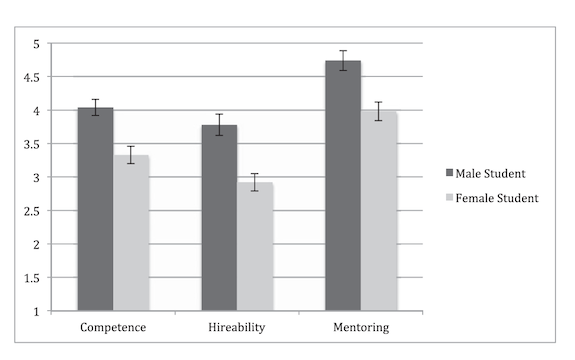Are Scientists Sexist? New Study Identifies a Gender Bias
A new study indicates that the gatekeepers of science, whether male or female, are less likely to hire female applicants to work in labs
/https://tf-cmsv2-smithsonianmag-media.s3.amazonaws.com/filer/20120924094204lab-science-small.jpg)
Despite significant gains in recent years, women are still underrepresented in many areas of science. In fields like physics, engineering and computer science, just 20 percent of of students earning bachelor’s degrees are female. The White House’s Women in STEM (Science, Technology, Engineering and Mathematics) program, among others, seeks to address this problem in part by encouraging female students to engage in science from a young age and by establishing mentoring programs among female science professionals to provide support.
But what if the underrepresentation of women in science has nothing to do with interest or professional support? What if women have a tougher time advancing in scientific careers simply because of their gender? A new study by Corinne Moss-Racusin and other Yale researchers, published last week in the Proceedings of the National Academy of Sciences, indicates that, at least among a sample of 127 biology, chemistry and physics professors, an unconscious gender bias pervades hiring practices and significantly impacts career advancement prospects for women.
“Our results raise the possibility that not only do such women encounter biased judgments of their competence and hireability, but also receive less faculty encouragement and financial rewards than identical male counterparts,” the researchers note in the paper.
The experiment was straightforward. The researchers sent 127 science professors around the country, both male and female, the exact same application materials from a made-up undergraduate student applying for a lab manager position. For 63 of the applications, though, they wrote that the student was male, named John; for the other 64, they wrote that the student was female, named Jennifer. Every other element of the application—the resume, GPA, references and other materials—was identical. To ensure that the outcomes of the two groups of applications were comparable, the researchers matched the two groups of professors in terms of age distribution, scientific fields, proportion of each sex and tenure status.
The 127 professors were each asked to evaluate the theoretical applicant in several ways: their overall competency and hireability, the salary they would offer to the student and the degree of mentoring they felt the student deserved. The faculty were not told the purpose of the experiment, just that their feedback would be shared with the student.
The results are startling: Both male and female professors consistently regarded the female student applicant as less competent and less hireable than the otherwise identical male student. On a scale of 1 to 5, the average competency rating for the male applicant was 4.05, as compared to 3.33 for the female applicant. The average salary offered to the female was $26,507.94, while the male was offered $30,238.10. The professor’s age and sex had insignificant effects on this disparity—old and young, male and female alike tended to view the female applicants more negatively.

The researchers’ analysis revealed that the disparities in hireability and salary offered were mostly due to differences in perceived competence for the female applicant. That is, when the researchers controlled for competence—by comparing only professors’ evaluations that had provided similar ratings for competency for both applicants—the hiring gap disappeared. A root reason for why females are underrepresented in science, then, could be this bias for inexplicably viewing them as less competent, thus making it more difficult for them to get jobs.
Many will find these results especially disappointing because one might expect the participants in the experiment—the 127 science professors—to be among the most enlightened individuals in our society. They have worked with female scientists (many are, in fact, are female scientists), so it’s strange to think that they would deliberately view them as less competent.
But the researchers don’t feel that this bias is necessarily a conscious one or one that pervades the entire field of science professors. In addition to having the professors rate the imagined student, they also had them fill out the Modern Sexism Scale, a well-established test that can unveil unintentional or subtle negativity towards women (rather than an explicit hostility). Those who came into the experiment with a preexisting, unconscious bias against women were much more likely to judge the female applicants as less competent.
What does this all mean? The researchers say that addressing the problem at hand—the fact that some of the gatekeepers of science, male and female, hold a consistent bias against women—is a start. To do so, they suggest implementing transparent, objectively fair hiring and evaluations practices in academics. Simply trying to attract younger female students to science isn’t a bad thing, but if we don’t seek to make hiring practices fair, it’s just setting them up to get shut out later.
/https://tf-cmsv2-smithsonianmag-media.s3.amazonaws.com/accounts/headshot/joseph-stromberg-240.jpg)
/https://tf-cmsv2-smithsonianmag-media.s3.amazonaws.com/accounts/headshot/joseph-stromberg-240.jpg)